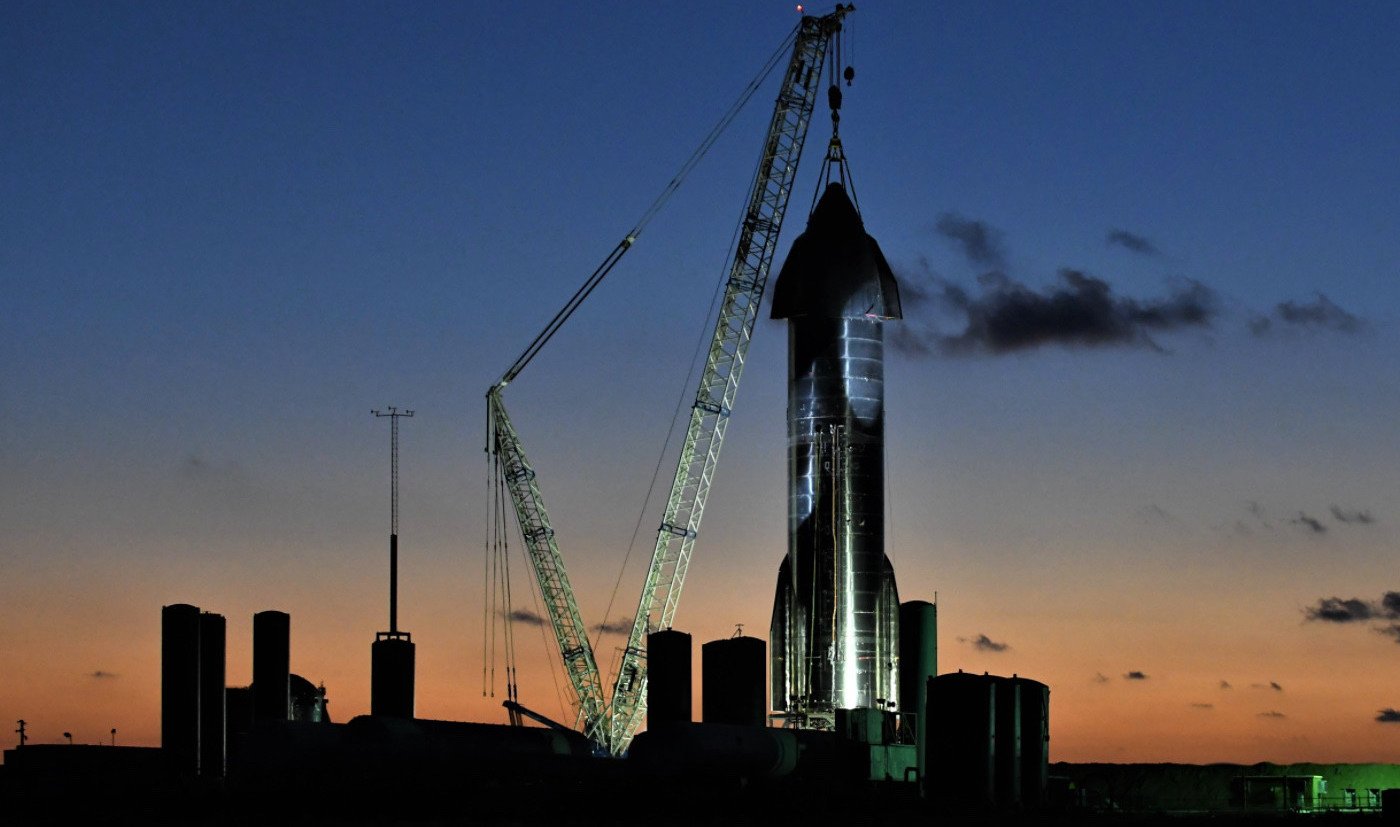
SpaceX’s next-generation Starship Rocket — the largest ever built — launched on its second-ever test flight on Saturday but the vehicle detonated before reaching its target altitude in what SpaceX called a “rapid unscheduled disassembly.”
“What we do believe right now is that the automated flight termination system on second stage appears to have triggered very late in the burn, as we were headed downrange out over the Gulf of Mexico,” said John Insprucker, SpaceX‘s principal integration engineer, during a live webcast.
The massive Starship and Super Heavy booster took off today at about 8 a.m. EDT (1300 GMT; 7 a.m. local Texas time) from SpaceX’s Starbase test and manufacturing facility in Boca Chica.
Just north of Boca Chica, here on South Padre Island, spectators gathered by the hundreds this morning to watch the launch. They cheered as the orange light from Starship’s 33 first-stage Raptor engines blazed through its plume of exhaust as the huge rocket began its climb.
Standing nearly 400 feet (122 meters) tall, Starship is the largest and most powerful rocket ever built, and it can be seen for miles when stacked and standing at the Starbase launch pad.
This was the second test flight for the fully integrated Starship, which consists of the Super Heavy first-stage booster and Starship upper-stage spacecraft.
The first liftoff, which occurred on April 20 of this year, did not go as well as this one did. April’s Starship launch ended with a self-destruct command about four minutes into flight, turning the tumbling rocket into a smoldering fireball.
One reason for April’s unscheduled disassembly was the failure of Starship’s two stages to separate. To prevent a recurrence of this problem on the second flight, SpaceX decided to go with a new strategy: “hot staging,” in which the upper stage’s engines begin firing before Starship and Super Heavy have fully separated. This concept isn’t new; it has been used on vehicles like the Titan II from NASA’s Gemini program in the 1960s and Russia’s venerable Soyuz rocket, which is still in operation.
Starship’s stage separation occurred on time today, about 2 minutes and 41 seconds after liftoff, and appeared to go smoothly, but the Super Heavy booster exploded shortly afterward.
“We’re going to take that data and improve the hot staging sequence and probably improve the hardware itself for the next flight,” SpaceX quality engineering manager Kate Tice said during the live webcast. SpaceX had hoped to soft-land the Super Heavy in the Gulf of Mexico to test reentry and landing processes.
The Starship upper stage continued flying for a short time after stage separation. SpaceX had hoped to establish signal acquisition with the spacecraft at its target altitude of about 150 miles (250 kilometers).
But telemetry from the vehicle was lost about eight minutes after liftoff, near the end of its own burn after stage separation, with SpaceX mission managers, including CEO and founder Elon Musk, eagerly awaiting updates in a live webcast.
The spacecraft was never expected to reach full orbit around Earth, instead flying on a suborbital trajectory to splash down in the Pacific Ocean off the coast of Hawaii.
“We’re not targeting orbit today; we’re targeting almost orbit,” said Siva Bharadvaj, a SpaceX operations engineer, adding that the goal was to “get to a thrust profile similar to what we would need for orbit, but also energy level that the ship would need to dissipate for reentry.”
See all the latest news from Greece and the world at Greekreporter.com. Contact our newsroom to report an update or send your story, photos and videos. Follow GR on Google News and subscribe here to our daily email!



